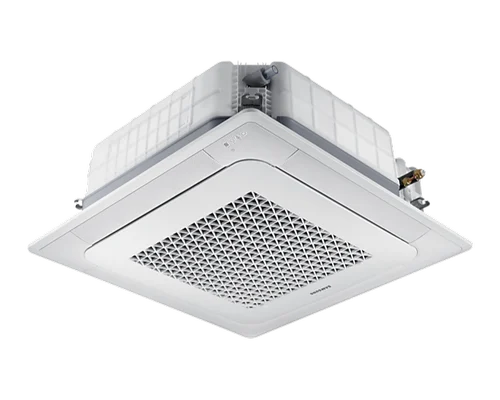In an HVAC (Heating, Ventilation, and Air Conditioning) system, various types of equipment are used to regulate and maintain the desired indoor environment. Here is a detailed list of key HVAC equipment and their functions:
1. Heating Equipment
Furnace
- Description: Heats air through combustion of fuel (gas, oil) or electricity.
- Components: Burner, heat exchanger, blower, flue.
- Function: Transfers heat to air and distributes it through ductwork.
Boiler
- Description: Heats water for heating systems.
- Components: Burner, heat exchanger, pumps, expansion tank.
- Function: Provides hot water or steam for radiators or radiant floor heating.
Heat Pump
- Description: Transfers heat from outdoors to indoors.
- Components: Compressor, condenser, evaporator, expansion valve.
- Function: Works in reverse to provide cooling in summer.
2. Cooling Equipment
Air Conditioner
- Description: Removes heat from indoor air to cool the space.
- Components: Compressor, condenser coil, evaporator coil, expansion valve, refrigerant.
- Function: Absorbs indoor heat and releases it outdoors.
Chiller
- Description: Produces chilled water for air conditioning.
- Components: Compressor, evaporator, condenser, expansion valve, water pump.
- Function: Provides cooling for large buildings by circulating chilled water.
3. Ventilation Equipment
Air Handling Unit (AHU)
- Description: Regulates and circulates air.
- Components: Fan, filter, heating and cooling coils, dampers, humidifier.
- Function: Mixes fresh and recirculated air, conditions it, and distributes it.
Rooftop Unit (RTU)
- Description: Self-contained unit located on the roof.
- Components: Similar to AHU with heating and cooling components.
- Function: Conditions and distributes air for commercial spaces.
Energy Recovery Ventilator (ERV)
- Description: Transfers heat and moisture between incoming and outgoing air.
- Components: Heat exchanger, fans, filters.
- Function: Improves energy efficiency by recovering energy from exhaust air.
Exhaust Fans
- Description: Removes stale air.
- Components: Motor, fan blades, housing, vent.
- Function: Ventilates areas like kitchens and bathrooms.
4. Humidity Control Equipment
Humidifier
- Description: Adds moisture to the air.
- Components: Water supply, evaporative pad, steam generator, fan.
- Function: Maintains indoor humidity to prevent dryness.
Dehumidifier
- Description: Removes moisture from the air.
- Components: Compressor, evaporator coil, condenser coil, water collection tank.
- Function: Reduces humidity to prevent mold and discomfort.
5. Air Quality Equipment
Filters
- Description: Removes particulates from the air.
- Types: Fiberglass, pleated, HEPA, activated carbon.
- Function: Improves air quality by trapping dust and pollutants.
Air Purifier
- Description: Cleans the air by removing pollutants.
- Components: Filters, UV lights, ionizers, fans.
- Function: Reduces airborne contaminants and allergens.
6. Ductwork and Distribution
Ducts
- Description: Channels for air distribution.
- Types: Flexible, rigid, semi-rigid.
- Function: Distributes conditioned air throughout the building.
Diffusers and Grilles
- Description: End points of the duct system.
- Function: Evenly distribute or collect air in rooms.
7. Control Systems
Thermostats
- Description: Regulates temperature settings.
- Types: Mechanical, digital, programmable, smart.
- Function: Allows users to set and maintain desired temperatures.
Building Management System (BMS)
- Description: Centralized control system.
- Components: Sensors, controllers, software.
- Function: Optimizes energy usage and maintains comfort.
8. Additional Equipment
Heat Exchanger
- Description: Transfers heat between fluids.
- Types: Plate, shell and tube, finned tube.
- Function: Improves efficiency by recovering heat.
Compressor
- Description: Increases refrigerant pressure.
- Function: Essential for refrigeration and air conditioning systems.
Expansion Valve
- Description: Regulates refrigerant flow.
- Function: Controls the refrigeration cycle.
Summary
Here is a summary of the primary HVAC equipment:
- Heating Equipment:
- Furnace
- Boiler
- Heat Pump
- Cooling Equipment:
- Air Conditioner
- Chiller
- Ventilation Equipment:
- Air Handling Unit (AHU)
- Rooftop Unit (RTU)
- Energy Recovery Ventilator (ERV)
- Exhaust Fans
- Humidity Control Equipment:
- Humidifier
- Dehumidifier
- Air Quality Equipment:
- Filters
- Air Purifier
- Ductwork and Distribution:
- Ducts
- Diffusers and Grilles
- Control Systems:
- Thermostats
- Building Management System (BMS)
- Additional Equipment:
- Heat Exchanger
- Compressor
- Expansion Valve
These components work together to provide a comfortable and healthy indoor environment by regulating temperature, humidity, and air quality.
Looking to install a commercial HVAC System or Duct work in your Business Area?
Contact Vipul Ac to learn about our HVAC Service
Call +91 9825636606 Today.
Related Posts
- Commercial HVAC system components
Commercial HVAC systems are more complex than residential systems due to the need to heat…
- HVAC equipment list
An HVAC (Heating, Ventilation, and Air Conditioning) system comprises various components and equipment designed to…
- Heating Airflow And Air Conditioning HVAC System
Heating, Ventilation and Air Conditioning (HVAC) is a system that controls the temperature, humidity, and…


